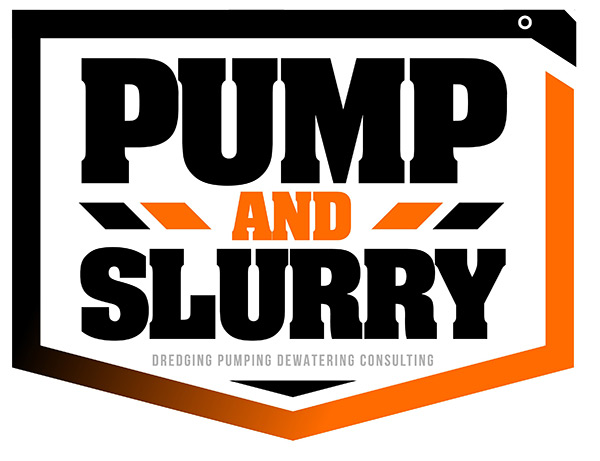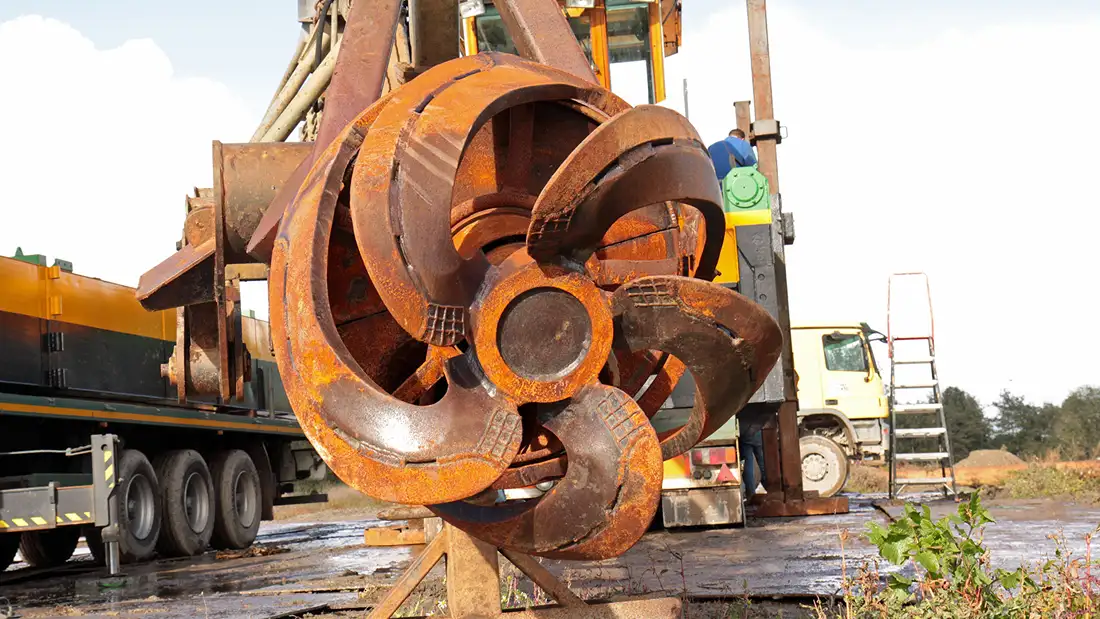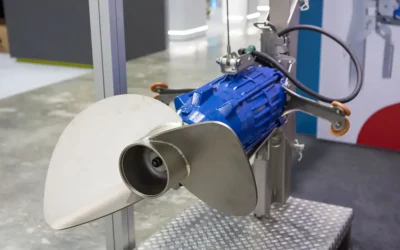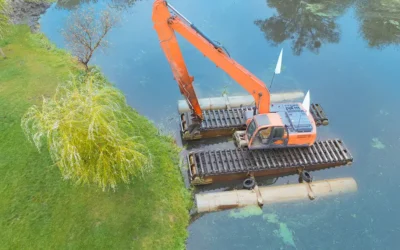A cutterhead dredge, also known as a cutter suction dredger (CSD), is a specialized piece of hydraulic dredging equipment designed for challenging, heavy-duty dredging tasks. Unlike traditional dredging methods, which rely solely on suction to remove material, a cutterhead dredge uses a powerful rotating cutter at the suction inlet to break up and loosen compacted sediments, rocks, or other hard materials. This makes it an ideal tool for projects where precision, power, and versatility are required.
Cutterhead dredges are essential for a wide range of dredging operations, from channel deepening and land reclamation to mining and environmental dredging. They are commonly used in environments where other dredging equipment may struggle, including deepwater sites, areas with dense or hard-packed materials, and in complex underwater terrains.
In industries such as mining, oil & gas, government infrastructure (military, naval, and municipal), and heavy industries, cutterhead dredges play a critical role in maintaining or expanding essential infrastructure. Whether it’s removing sediment for navigation, extracting minerals from riverbeds or seabeds, or ensuring environmental remediation, the flexibility and performance of a cutter suction dredger make it a preferred choice for large-scale dredging projects.
This blog aims to provide a clear understanding of how cutterhead dredges work, their key benefits, and why they are often the optimal solution for challenging dredging applications. By highlighting their operational principles and real-world applications, we aim to help decision-makers in procurement and engineering better understand the value these dredging machines bring to high-stakes projects in critical sectors.
What is a Cutterhead Dredge?
Definition and Key Components
A cutterhead dredge, also referred to as a cutter suction dredger (CSD), is a type of hydraulic dredging equipment used primarily for removing underwater sediments, rocks, or other challenging materials. Unlike traditional dredging techniques that rely solely on suction, a cutterhead dredge is equipped with a rotating cutter head positioned at the suction inlet. This cutter head is designed to break up compacted, dense, or rocky materials, which are then mixed with water to create a slurry. The slurry is suctioned through a pipeline and transported to a designated disposal or reclamation site.
The key components of a cutterhead dredge include:
- Cutter Head: The rotating mechanism at the front of the dredge that uses hard-wearing blades or teeth to break up sediments.
- Suction Inlet: The point where the dredging material is loosened and mixed with water to form a slurry.
- Dredge Pipe: The long, flexible pipe through which the slurry is pumped away from the dredge.
- Pump System: A powerful centrifugal pump that creates suction to move the slurry through the pipe.
- Ladder and Positioning System: A long ladder structure that supports the cutter head and allows for precise positioning and movement during dredging operations.
How It Works
A cutterhead dredge works by combining mechanical and hydraulic processes. The cutter head spins, causing the sharp, durable blades or teeth to break apart the mud or debris on the bottom or riverbank. Once loosened, the material is combined with water at the suction input to produce a slurry. The pump system draws the slurry up through the dredge pipe and discharges it at a preset point.
One of the standout features of a cutter suction dredger is its ability to precisely control the dredging process. The dredge is typically mounted on a floating platform, and through the use of spuds, winches, and wires, it can be anchored in place and moved in a controlled manner. This allows the cutter head to sweep through a defined arc, efficiently covering the dredging area without requiring constant movement of the vessel.
Real-World Applications
Cutterhead dredges are critical in various heavy-duty dredging applications:
- Channel Deepening: CSDs are widely used to deepen channels, ports, and waterways, ensuring safe navigation for ships. The cutter head’s capacity to handle compressed materials qualifies it for deepwater dredging.
- Land Reclamation: In projects where new land is created from bodies of water, cutterhead dredges can move large amounts of material to build up landmasses for infrastructure development.
- Mining: Cutterhead dredges are commonly used in mining operations to extract valuable minerals from riverbeds, shallow seas, or reservoirs. Their ability to break through rock and compacted material makes them ideal for resource extraction in these environments.
The range of uses of the cutterhead dredge makes it valuable in sectors including as oil and gas, mining, construction, and environmental cleaning, where the ability to manage and remove tough materials swiftly and efficiently is critical to project success.
How Does a Cutter Suction Dredger (CSD) Operate?
Detailed Working Principle
A cutter suction dredger (CSD) uses both mechanical cutting and hydraulic suction. This integrated system enables it to break down efficiently, transport, and release materials from the seabed, riverbed, or other submerged settings. Here is an explanation of the main steps in how a cutterhead dredge works:
1. Cutting and Loosening of Material
The procedure starts with the cutter head at the dredge’s front. This spinning cutter head is fitted with heavy-duty blades or teeth that are intended to dig into the material on the bottom or riverbed. The cutter head’s rotation provides two important functions:
- Loosening Compact Materials: The cutterhead effectively breaks apart hard-packed materials like clay, rock, or dense sediment, making it possible to extract materials that are otherwise difficult to dredge.
- Fragmenting Larger Debris: For areas with larger debris or rocks, the cutterhead’s mechanical action ensures that even bulky materials can be broken down into smaller, manageable pieces.
This cutting action is essential for handling more challenging dredging environments, where materials might be too tough or dense for other types of dredging equipment, such as a traditional suction dredger.
2. Slurry Formation
Once the material has been loosened by the cutterhead, it mixes with water at the suction inlet of the dredge. The powerful suction created by the dredge pump helps to draw the loosened material into the pipeline. The mix of water and sediment forms a slurry, which is easier to transport through the system.
This slurry is of great importance for making the material easier to transport and more manageable for disposal or reclamation. The water-to-sediment ratio is intended to keep pumps working efficiently while avoiding impediments that might hamper the dredging process.
3. Suction and Transport
After the slurry is formed, it is sucked into the dredge pipe through the suction inlet. The powerful centrifugal pump attached to the dredge plays a key role in this step. It generates a high level of suction, pulling the slurry through the pipe and pushing it toward the discharge point.
The slurry is typically transported through floating pipelines, which are specially designed for the dredging environment. These pipes can be extended or adjusted in length as needed, depending on the scale and depth of the dredging project.
4. Controlled Positioning for Precision Dredging
One of the defining features of a cutter suction dredger is its ability to maintain precise control over its position while dredging. Using a ladder system and spuds (anchoring devices), the dredge can be held in place and maneuvered with great accuracy. This allows the cutter head to move in a controlled arc, dredging a specific area without the need for constant vessel repositioning.
The winch system allows the dredger to adjust its position by raising or lowering the spuds, giving the cutterhead the flexibility to cover large areas in a consistent and effective manner.
Advantages of Cutter Suction Dredgers
This combination of cutting, slurry formation, suction, and precise positioning provides several advantages over other dredging methods, such as:
- Handling a Wide Range of Materials: The cutterhead allows the dredger to effectively manage compacted soils, clay, silt, and even some types of rock, which would be difficult for a conventional suction dredger to handle.
- Improved Operational Efficiency: The ability to dredge larger quantities of material in a controlled and efficient manner speeds up project timelines and reduces overall operational costs.
- Flexibility for Complex Projects: Whether working in deepwater or shallow environments, the CSD can adapt to a variety of terrains, making it ideal for projects that require high levels of precision or that involve challenging conditions.
In conclusion, the cutter suction dredger’s integrated approach, which combines mechanical cutting, hydraulic suction, and accurate positioning, enables it to function efficiently in a wide range of heavy-duty dredging settings. This makes it an important tool for businesses that require high-performance dredging capabilities, such as infrastructure construction and environmental cleanup.
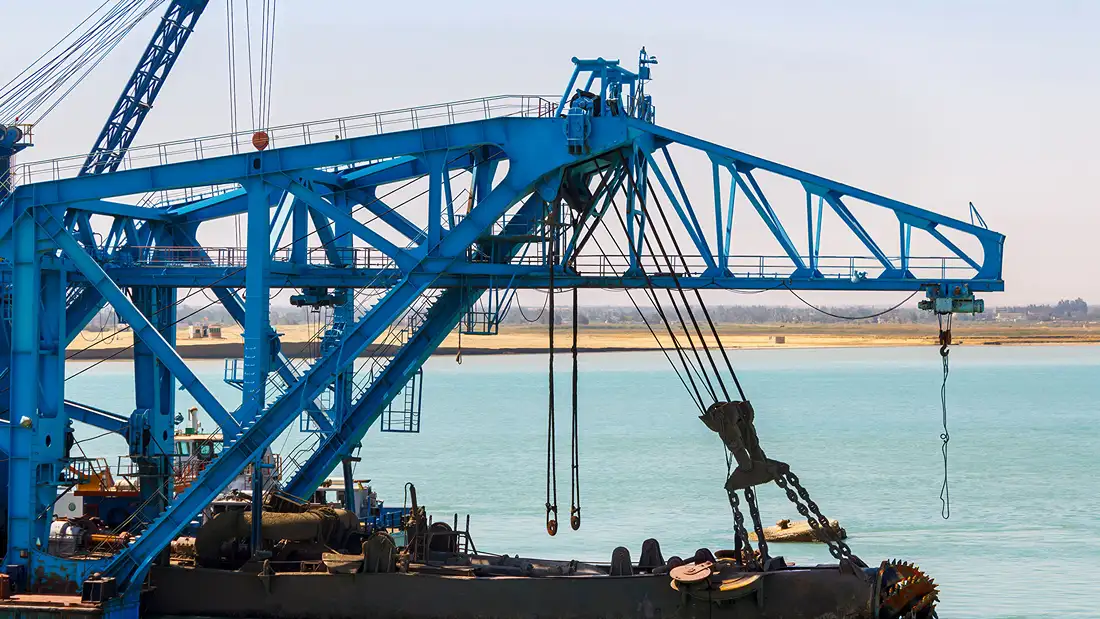
Types of Dredging and the Role of Cutterhead Dredges
Overview of Dredging Types
Dredging projects typically fall into three broad categories: maintenance dredging, capital dredging, and environmental dredging. Each type serves a unique purpose and presents different challenges, making it essential to choose the right dredging equipment based on project requirements. Cutterhead dredges (CSDs) are widely used in all these categories due to their versatility, precision, and ability to handle a wide range of materials. Below, we explore the different types of dredging and the crucial role that cutter suction dredgers play in each.
1. Maintenance Dredging
Maintenance dredging is done to keep rivers, ports, and canals navigable. Over time, silt accumulates in these regions, necessitating frequent clearance to maintain safe passage for vessels. This sort of dredging is required for ports, shipping lanes, and water navigation systems that have silt buildup due to natural or man-made factors.
- Role of Cutterhead Dredges: CSDs are especially effective in maintenance dredging operations because they can handle both soft and compacted sediments, which are often encountered in long-established channels. The cutter head’s ability to break up dense, packed sediments ensures that material removal is efficient, even in challenging conditions.
- Real-World Example: In major ports and shipping lanes, where consistent dredging is required to maintain sufficient depth for large vessels, cutter suction dredgers are deployed to clear accumulated mud, silt, and compacted sediment. The CSD’s precise control allows for targeted dredging, reducing downtime and enabling efficient operations.
2. Capital Dredging
Capital dredging involves the creation or expansion of waterways, harbors, or ports, often to facilitate larger ships or improved infrastructure. This type of dredging can involve digging deeper or wider channels and is typically a one-time or long-term project to prepare for future use.
- Role of Cutterhead Dredges: Cutterhead dredges are indispensable in capital dredging due to their ability to handle hard, compacted materials that may be encountered during the excavation of new channels or harbors. The cutter head’s mechanical action allows the dredge to effectively break through rock, dense clay, and other tough materials often found in virgin or previously untouched sites.
- Real-World Example: For large-scale port expansion projects, where the seabed may need to be deepened to accommodate larger vessels, cutter suction dredgers are used to remove dense, layered sediments and ensure the project meets the required depth. These dredgers can also adapt to different sediment types, which makes them an essential tool for infrastructure development projects.
3. Environmental Dredging
Environmental dredging focuses on the removal of contaminated or polluted sediments from water bodies to improve water quality, restore aquatic habitats, and protect ecosystems. This type of dredging is often performed in areas impacted by industrial activity or natural pollution, such as heavy metals, chemicals, or hazardous waste.
- Role of Cutterhead Dredges: Cutter suction dredgers are important in environmental dredging because they can remove hazardous materials while causing minimal disruption to neighboring regions. The cutterhead’s precision action enables targeted dredging, keeping contaminants from spreading and reducing the dredging process’s environmental effect. Furthermore, the slurry produced by the dredger is carefully regulated to keep pollutants confined and appropriately disposed of.
- Real-World Example: In projects aimed at restoring riverbeds or harbors contaminated by industrial runoff, cutterhead dredges are used to remove layers of polluted sediment while minimizing the disturbance to local wildlife. The ability of the CSD to handle various materials, such as contaminated sludge, silt, or even debris, makes it ideal for environmental restoration work.
Comparison of Dredging Methods
While cutterhead dredges are highly effective across all types of dredging, other methods may also be employed depending on project scope and material conditions. For example:
- Mechanical Dredging: This method uses equipment like backhoes or clamshell buckets to excavate materials. Mechanical dredging is often used for handling large, solid materials like boulders or debris. However, it is generally slower than hydraulic dredging and may not be as efficient for handling finer, compacted sediments.
- Trailing Suction Hopper Dredgers (TSHD): TSHDs use a suction mechanism without a cutting head, making them better suited for soft sediment removal in deeper water. However, they lack the precision of a cutter suction dredger when dealing with tough or compacted material.
In summary, the cutterhead dredge is highly effective for maintenance, capital, and environmental dredging due to its ability to break through tough materials, operate efficiently in varying conditions, and offer precise control over the dredging process. Whether the goal is to maintain navigation routes, expand harbors, or restore ecosystems, CSDs provide an essential tool for achieving these objectives.
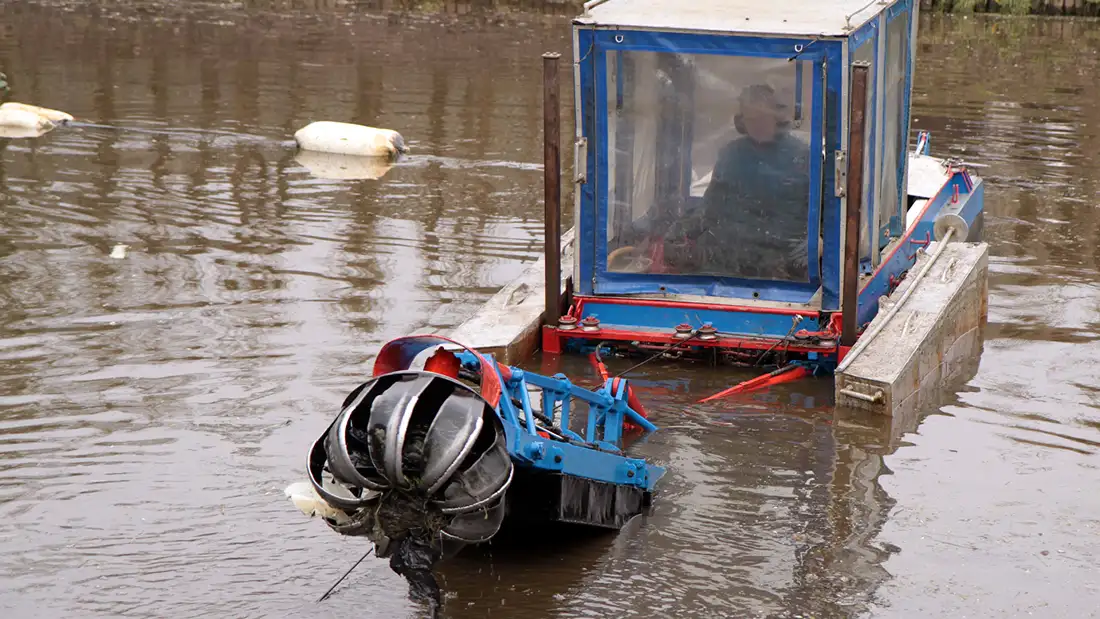
Which Dredge Can Handle Large Material but Is Slower to Process?
Overview of Mechanical Dredging
While cutterhead and suction dredgers are well-known for their ability to handle compacted and dense materials, mechanical dredges are often chosen. Mechanical dredging, which includes backhoe dredgers and clamshell dredgers, is intended to handle huge, solid objects such as rocks, rubble, and enormous silt. Mechanical dredges scoop or dig materials and load them into a hopper or transport vessel, as opposed to hydraulic dredgers (such as cutter suction dredgers), which gather materials by suction.
Mechanical dredging is commonly used for tasks that need the removal of huge, irregularly shaped objects. While these machines are great at handling heavy material, they are slower to remove material than hydraulic dredging methods such as suction dredgers and cutter suction dredgers.
Capabilities of Mechanical Dredges
- Handling Large Debris: Mechanical dredges are well-suited for operations involving large rocks, debris, and other oversized materials that would be difficult or inefficient to process with a suction dredger. Their robust design allows them to grab and lift large objects from the seabed or riverbed, making them ideal for areas with significant underwater obstructions.
- Precision Lifting and Excavation: These dredges are also preferred when precision lifting is critical. The mechanical scooping action of a backhoe or clamshell provides a higher degree of control over the material being removed. This makes them highly effective in confined spaces or areas where selective dredging is required, especially when navigating areas where suction dredgers might be too cumbersome or inefficient.
Slower Processing Rates Compared to Cutter Suction Dredgers
While mechanical dredges excel at handling oversized material, they tend to be slower in processing and material removal rates compared to cutter suction dredgers (CSDs) and other suction dredgers. The main difference between mechanical dredges and suction dredgers lies in their operational mechanics:
- Cutterhead Dredge (CSD): The cutter suction dredger integrates cutting, suction, and slurry transportation in a continuous, efficient cycle. The cutterhead breaks up compacted material, and the slurry is rapidly transported via suction, allowing for the fast removal of large volumes of material.
- Mechanical Dredge: In contrast, mechanical dredgers operate in a stop-and-go fashion. First, they scoop material, then lift it, and finally deposit it into a disposal area or transport vessel. This process is inherently slower compared to the continuous suction and transport system employed by cutter suction dredgers and other suction dredgers, which can remove material in a continuous flow.
When to Choose a Mechanical Dredge Over a Cutterhead Dredge
While cutter suction dredgers (CSDs) and suction dredgers are faster and more efficient for most dredging projects, mechanical dredges are often preferred when handling particularly large, hard, or consolidated material. Some scenarios where mechanical dredging is more suitable include:
- Heavy Debris Removal: When projects require the removal of large rocks, boulders, or other debris that may obstruct dredging operations, mechanical dredgers can be the better choice. The physical scooping action is better suited for handling oversized materials that suction dredgers might struggle with.
- Shallow or Confined Areas: In shallow dredging areas or tight spaces where maneuverability and precision are more important than speed, mechanical dredges provide superior control. The mechanical bucket or grab offers more flexibility in delicate or confined locations, making it ideal in areas where suction dredgers may be less effective due to limited space.
Cost and Project Considerations
The slower processing speed of mechanical dredgers means that in projects where speed and efficiency are critical, cutterhead dredges or suction dredgers are usually the preferred options. However, the ability of mechanical dredges to handle large, difficult materials can still justify their use, especially in projects where precise control and heavy-duty lifting are more important than fast material removal.
For projects focused on removing oversized debris but with less emphasis on speed, mechanical dredging can be a cost-effective alternative. On the other hand, for large-scale dredging operations where high-volume material removal is needed, suction dredgers (including cutter suction dredgers) typically provide a better return on investment (ROI) due to their faster processing speeds and ability to handle a wide variety of materials, including dense or compacted materials.
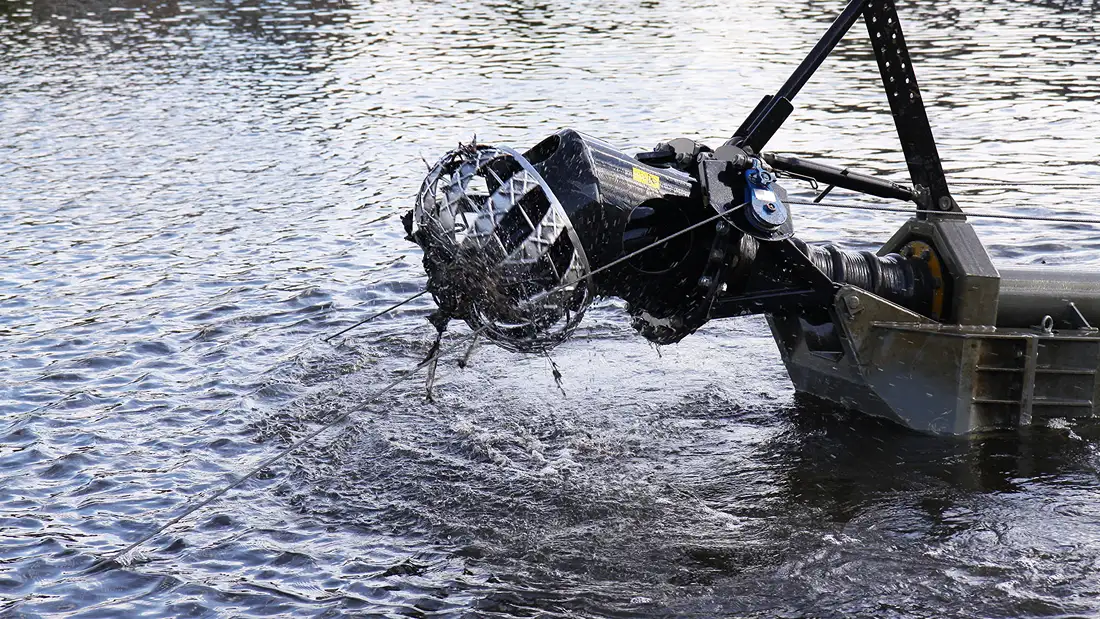
Final Considerations for Decision-Makers
Selecting the right dredging equipment is a critical decision for project managers, procurement teams, and engineers working across marine, mining, and infrastructure sectors. When dealing with complex environments such as deepwater channels, land reclamation zones, or contaminated sediment areas, cutter suction dredgers (CSDs) and other suction dredgers offer dependable performance and cost efficiency. Their ability to precisely remove and transport material makes them indispensable in projects that require both power and control.
At Pump & Slurry Systems, we specialize in providing advanced dredging solutions that meet the technical and operational demands of modern projects. Whether your goal is environmental restoration, port expansion, or mining preparation, our team can help you identify and deploy the right cutterhead or suction dredge for your needs. Contact us to discuss your project requirements and explore how our reliable, high-performance equipment can support your next dredging operation.




